I didn’t grow up eating upside-down cake. In fact, I’m pretty sure I was in college by the time I first encountered one up-close, and I wasn’t exactly chomping at the bit to try it. (I blame the maraschino cherries. And the canned pineapple. Definitely not my thing.) Day-glo canned fruit notwithstanding, I’ve always been fascinated by the concept of the upside-down cake. I love that you build an oozy sticky caramel in the bottom of the pan, and the decorative fruit topping bakes right onto the cake. Talk about efficient! Just plate and serve, there’s no need to bother with a garnish (though you’re certainly welcome to gild the lily with a dollop of lightly sweetened whipped cream or a scoop of your favorite vanilla ice cream). When I started experimenting with upside-down cakes I was thrilled to discover that you can make them with pretty much any fruit your heart desires. Apples, berries, peaches, pears, nectarines…even citrus! I may tackle that last one in a post down the road at the height of the citrus season, but right now it’s Fall, and pear is where it’s at. So I’m using pears, and I’m pairing them (see what I did there?) with a molasses-ginger cake batter instead of the standard yellow cake. There’s just something magical about the combination of pear and ginger, isn’t there? As is the case with most of my pastries, this cake isn’t super-sweet; it contains just enough coconut sugar to balance the spiciness of the ginger and earthiness of the molasses.
This batter requires you to dirty one more pan than the standard upside-down cake, but if you love ginger like I do, I promise it’s worth it. If you don’t do a ton of GF baking or experimenting with alternative flours you may notice an unfamiliar ingredient in the recipe – mesquite flour (you can read my brief overview of it here). Made from the ground, dried pods of the mesquite tree, this gluten-free powder has a wonderfully sweet and complex flavor reminiscent of coffee, cinnamon and chocolate. What’s not to love about that? It has many other uses – you can even use it as a caffeine-free alternative to cocoa powder for a hot beverage, and I’ll feature it in future posts. However, if you’d rather not buy mesquite flour you can still make this cake. Replace it with another 50 grams or 6 ½ tablespoons of brown rice flour (I recommend Bob’s Red Mill Stone Ground Brown Rice Flour), add an extra pinch of cinnamon and ⅛ teaspoon instant coffee or espresso powder and you’re good to go.
While I’m on the subject of ingredients, please don’t use blackstrap molasses for this recipe, it’s too bitter. For a good unsulphured molasses that’s readily available, I recommend Grandma’s Original (or Grandma’s Robust if you’re really fond of molasses flavor). Okay, ready to get to work? If you’d like to make this cake and you don’t have a cast iron skillet, I’ve included alternate instructions in the Notes section of the recipe. Now let’s get baking!
Here’s my caramel about 30 seconds after I whisked in the coconut sugar. See how it’s foaming? That’s totally normal, don’t panic. Just moderate the heat and stir to keep it from spilling over. You only want to boil it for 1-2 minutes, then pull it off the heat, stir in the vanilla and salt, and let it sit while you prep your pears and batter.
Arrange the pear slices in the caramel in a circle around the pan, overlapping them slightly. This was a test batch so I used a smaller skillet and really large pears, and the slices were so long they ended up meeting in the center. Yours probably won’t reach to meet in the middle like that, so fill in the center with smaller pieces.
The batter will pretty much look like melted chocolate. Whisk until it’s free of all visible clumps and streaks of flour, then carefully pour it over the pears – try not to jostle them out of place too much – and use a silicone spatula to even out the surface, making sure the batter reaches the edge all the way around the pan.
When the cake is finished baking and your remove it from the oven, please remember to protect your hands as that handle will be extremely hot. Also use caution when flipping the cake onto a plate – grip the skillet with an oven mitt or dry kitchen towel, hold the plate firmly against the skillet to cover the cake completely, and watch out for sauce that may leak out. I can tell you from experience that it’s really not fun to have molten caramel running down your bare arms. OUCH.
Ta-da! Isn’t it lovely?
Look at that gorgeous, moist crumb and those glossy pears. Seriously, this cake needs no adornment, but a dollop of whipped cream or a scoop of vanilla ice cream would really send it over the top. Whatever you choose, enjoy!
- For Caramel and Pears:
- 13 g (scant Tbsp) coconut oil or 14 grams (1 Tbsp) unsalted butter
- 60ml/78 g maple syrup or 60 ml/85 g honey (about ¼ cup)
- 39 g (about ¼ cup) coconut palm sugar
- Pinch of fine kosher or sea salt
- ¼ tsp pure vanilla extract or vanilla paste
- 3 medium (about 6-7 oz each) firm Bosc pears, peeled, cored, and cut into ⅛ inch thick slices
- For Cake:
- 168 g (1 ⅓ cups) superfine brown rice flour
- 58 g (½ cup + 2 Tbsp) potato starch
- 50 g (½) cup mesquite flour
- 18 g (2 Tbsp + 1 tsp) tapioca starch
- ⅜ tsp xanthan gum
- ½ tsp ground cinnamon
- ½ tsp ground allspice
- ½ tsp Kosher salt
- ¼ teaspoon ground cloves
- ¼ teaspoon ground ginger
- 176 ml (¾ cup) water
- 1 ½ tsp baking soda
- 158 ml/225 g (⅔ cup) mild or dark unsulphured molasses (NOT blackstrap)
- 78 g (½ cup) coconut palm sugar or dark brown sugar
- 30 ml (2 Tbsp) fresh or bottled ginger juice*
- 30 g (a fat 2-inch piece) fresh ginger, peeled and finely grated
- 120 ml (½ cup) milk or dairy-free alternative of choice
- 2 large eggs, room temperature, lightly beaten
- Preheat oven to 325°F.
- Prepare the sauce: Melt oil or butter in a large 9- or 10-inch cast iron skillet** over medium heat. Add maple syrup (or honey) and coconut sugar and cook, stirring frequently, until sugar dissolves completely. Bring to a boil and continue to cook for another 1 ½ to 2 minutes. Remove from heat, stir in salt and vanilla, and let cool slightly.
- Arrange pear slices in an overlapping circle around the pan, then fill in the center, cutting some smaller pieces if necessary to fit. Set aside.
- Prepare the batter: In a medium bowl whisk together flours, starches, xanthan gum, cinnamon, allspice, pepper, salt and cloves, and set aside.
- Bring water to a boil in a medium-large saucepan, stir in baking soda, then stir in molasses, coconut sugar and ginger juice, whisking until smooth. Remove from heat and add grated ginger. Whisk in milk, then eggs. Gradually sift or shake dry ingredients into the pan, whisking vigorously to combine thoroughly until no visible dry bits or streaks of flour remain.
- Bake the cake: Carefully pour the batter over the pears in the skillet, smoothing gently to the edges of a pan with a silicone spatula if necessary.
- Bake for 50-60 minutes, or until a toothpick comes out clean. Let cake cool for 5 minutes before removing from pan.
- Flip and Serve: The sides of the cake should pull away from the pan during baking, but if they need a nudge gently run a small offset spatula or flat knife around the edge of the skillet to loosen. Cover the skillet with a large serving plate and hold it firmly in place as you CAREFULLY flip the skillet over to release the cake onto the plate. ***The cast iron skillet will still be extremely hot. Please protect your hands with potholders, oven mitts or kitchen towels, and beware of dripping molten caramel!
**If you don't have a cast iron skillet you can still bake this cake. Make the caramel in a small skillet or saucepan and set aside. Generously grease a cake or spring-form pan with whichever fat you used in the caramel, line the bottom with a round of parchment paper, and grease that as well. Pour the sauce into the prepared pan and proceed as directed with the remainder of the recipe (though if you use a spring-form you'll want to remove the sides of the pan before flipping the cake).
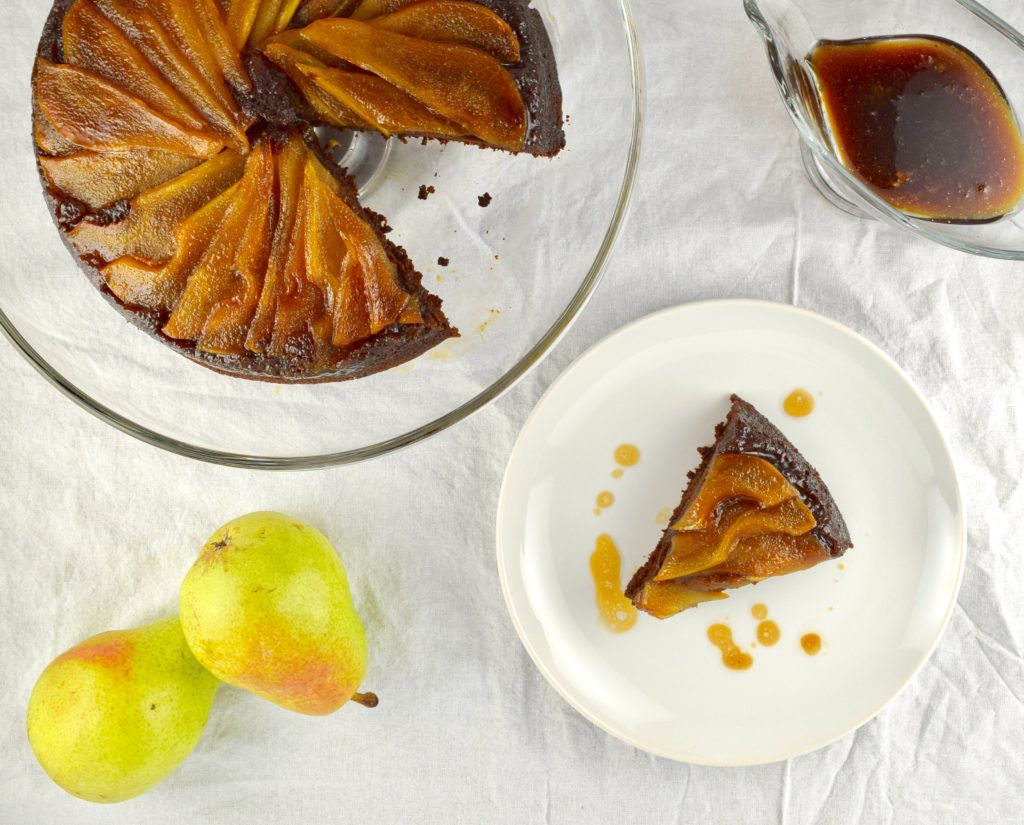
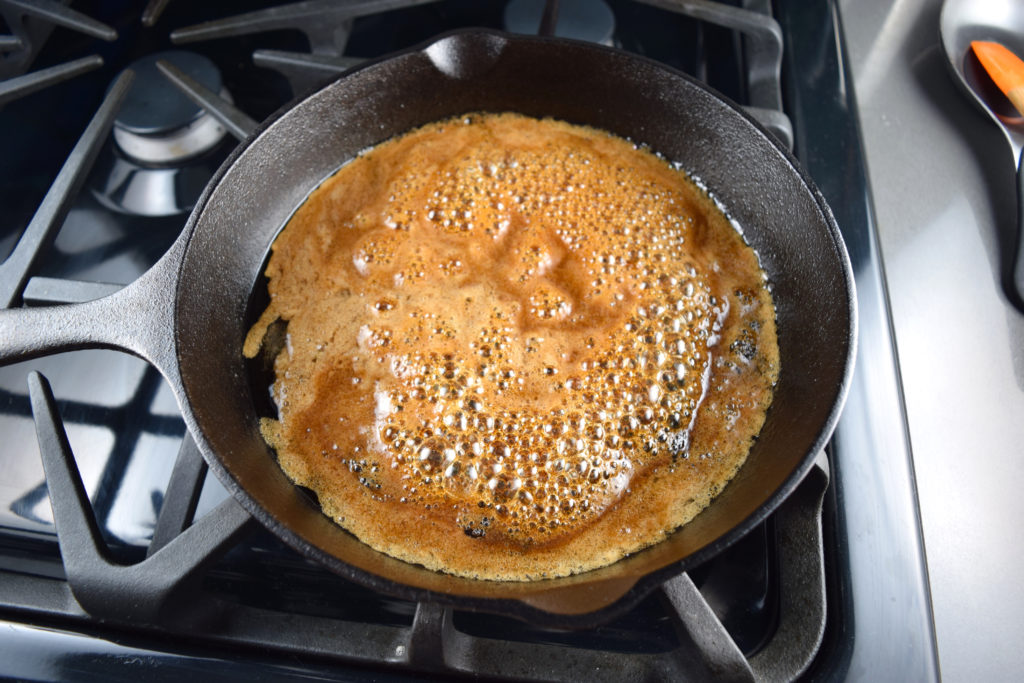
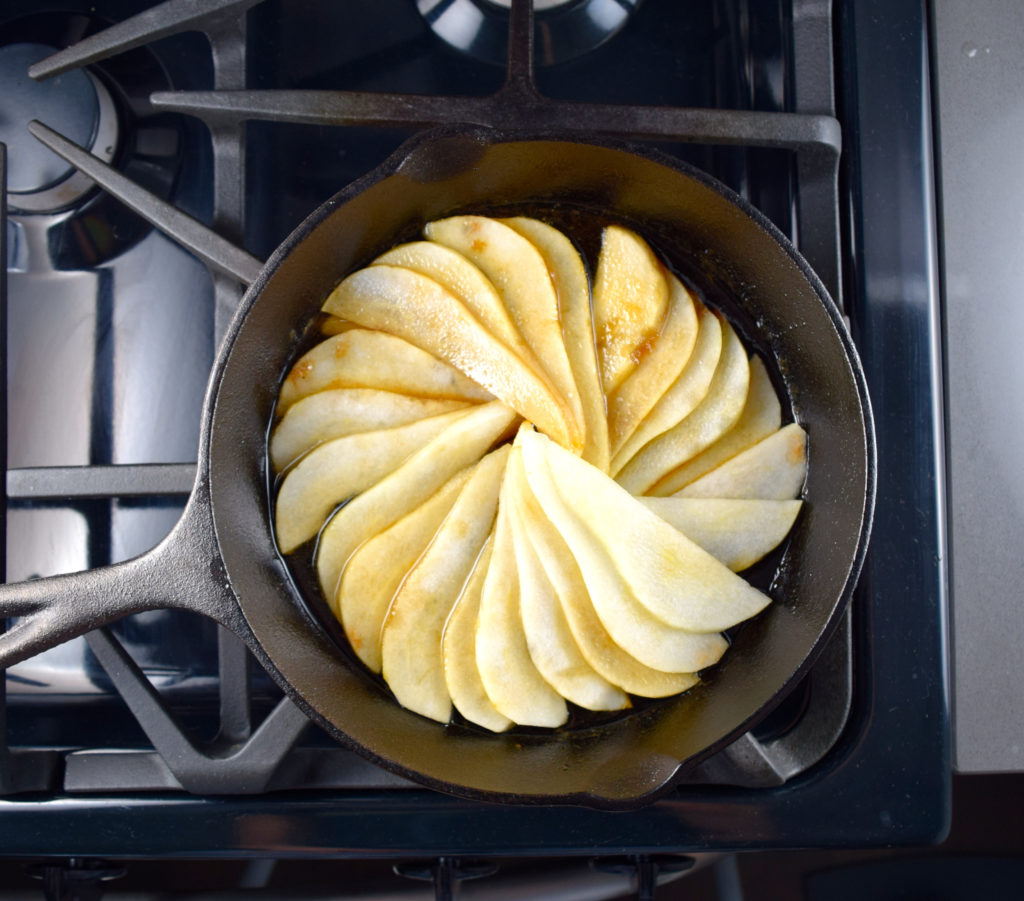
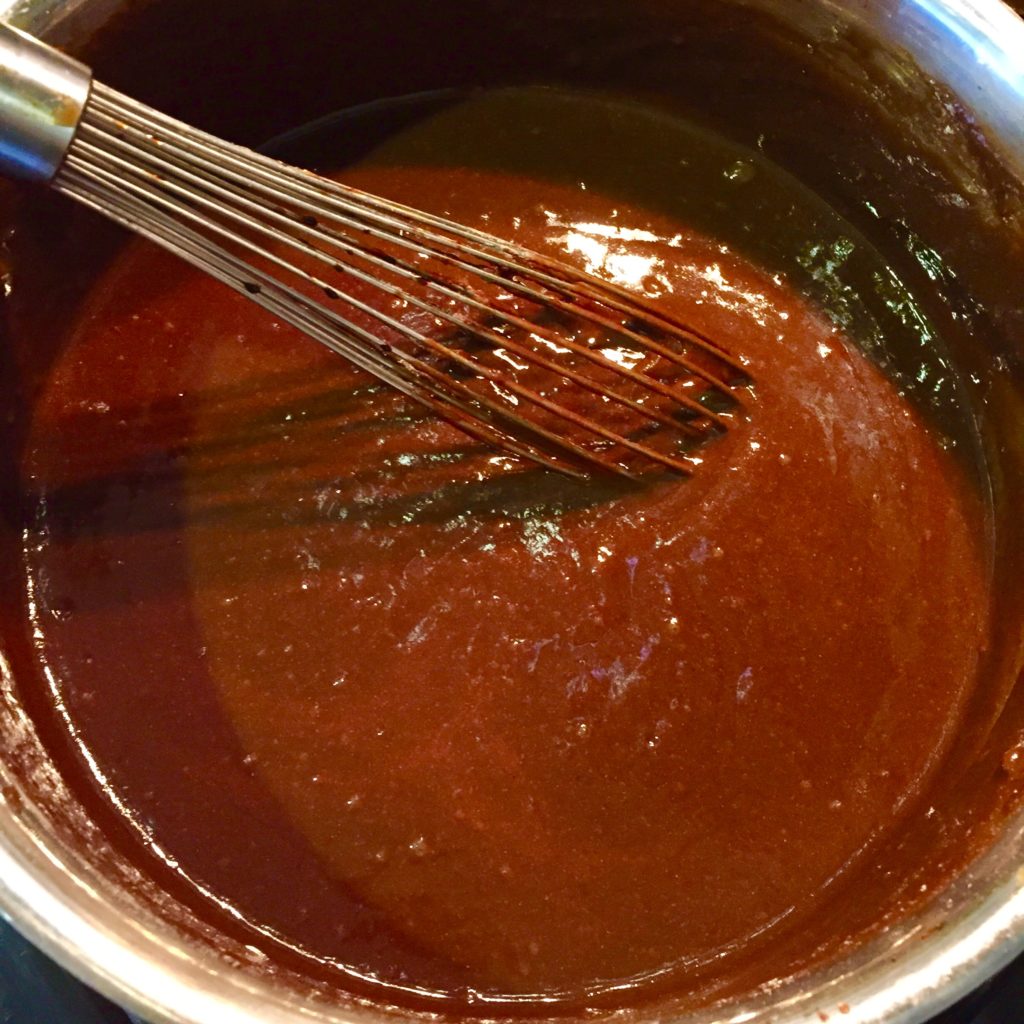
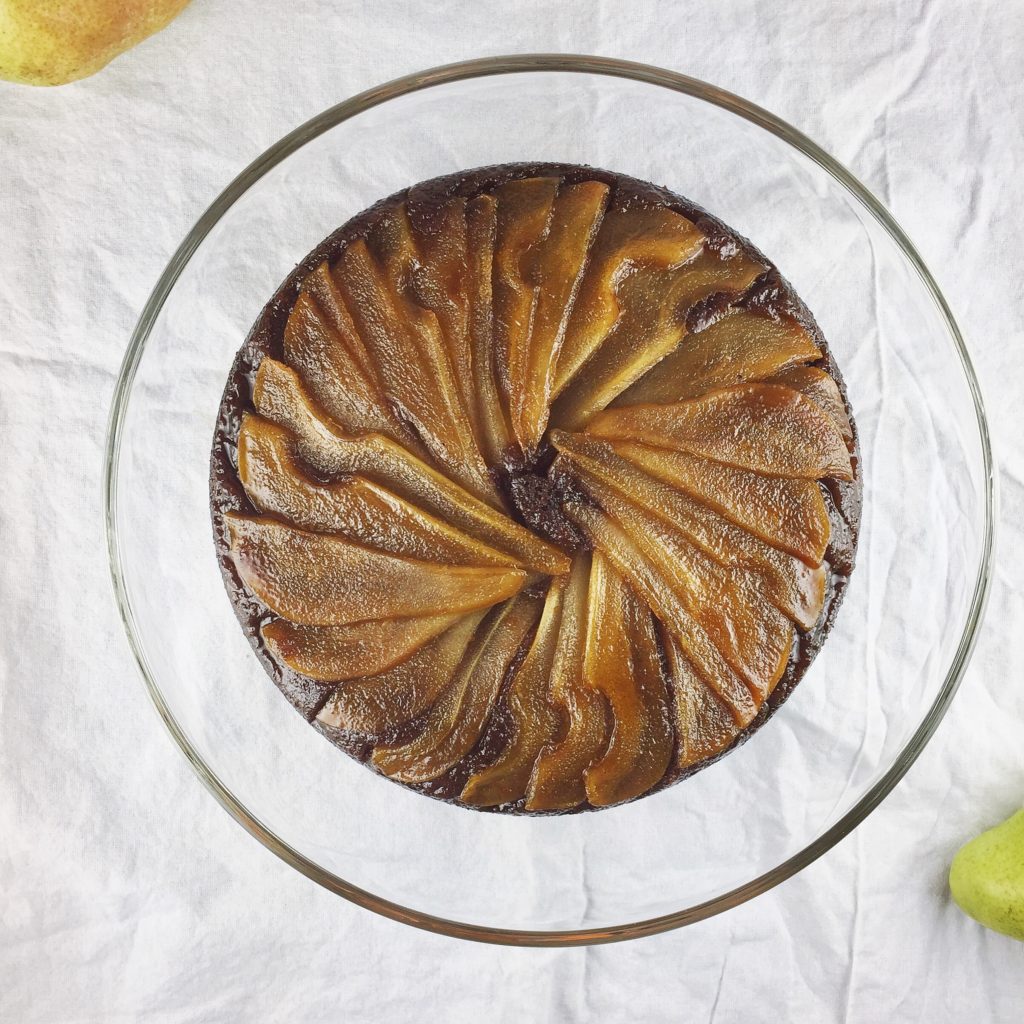
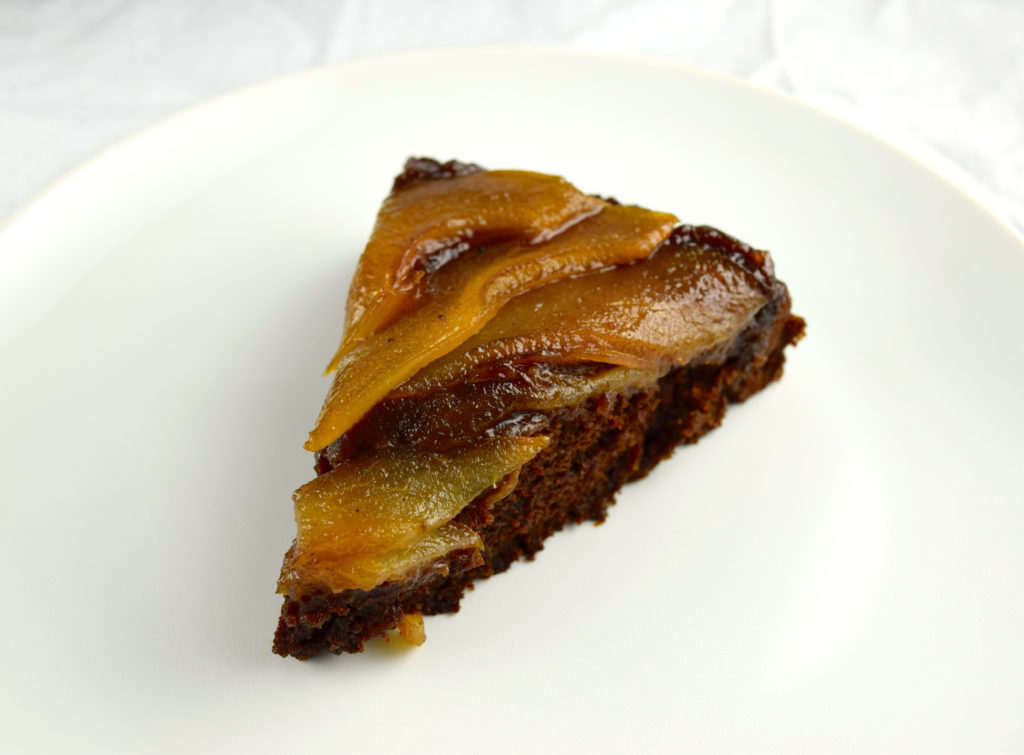


Leave a Reply